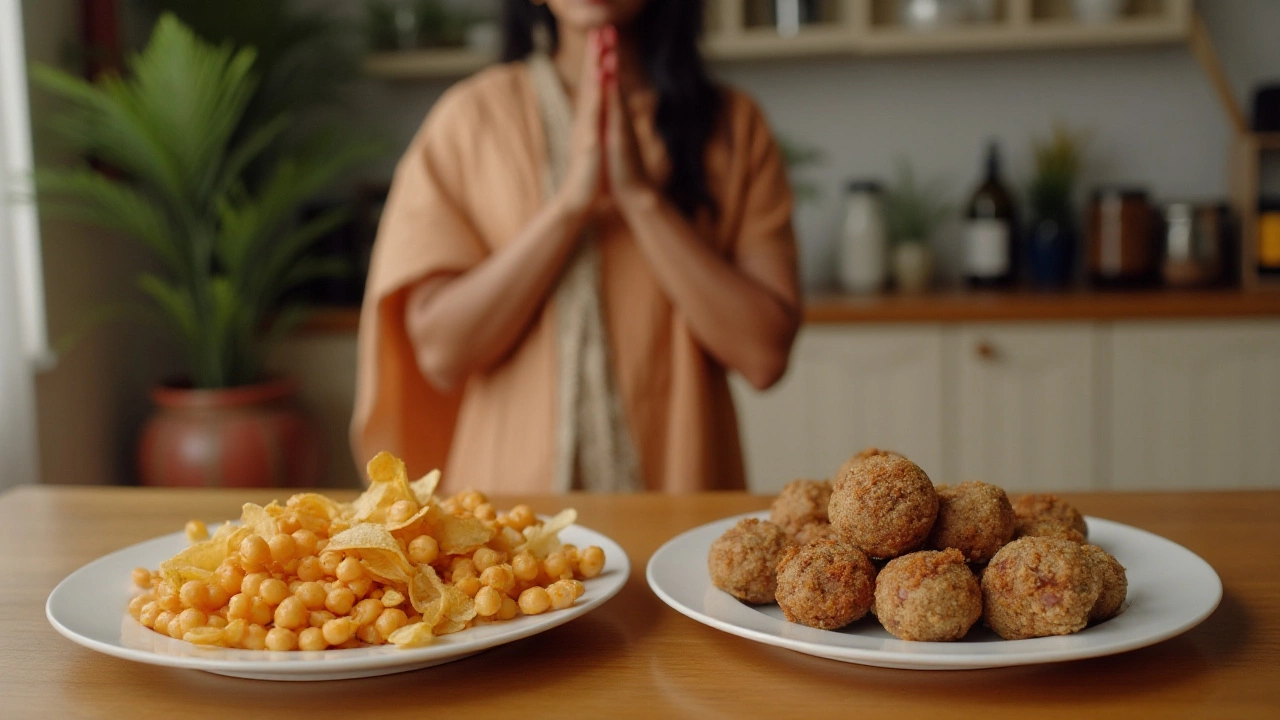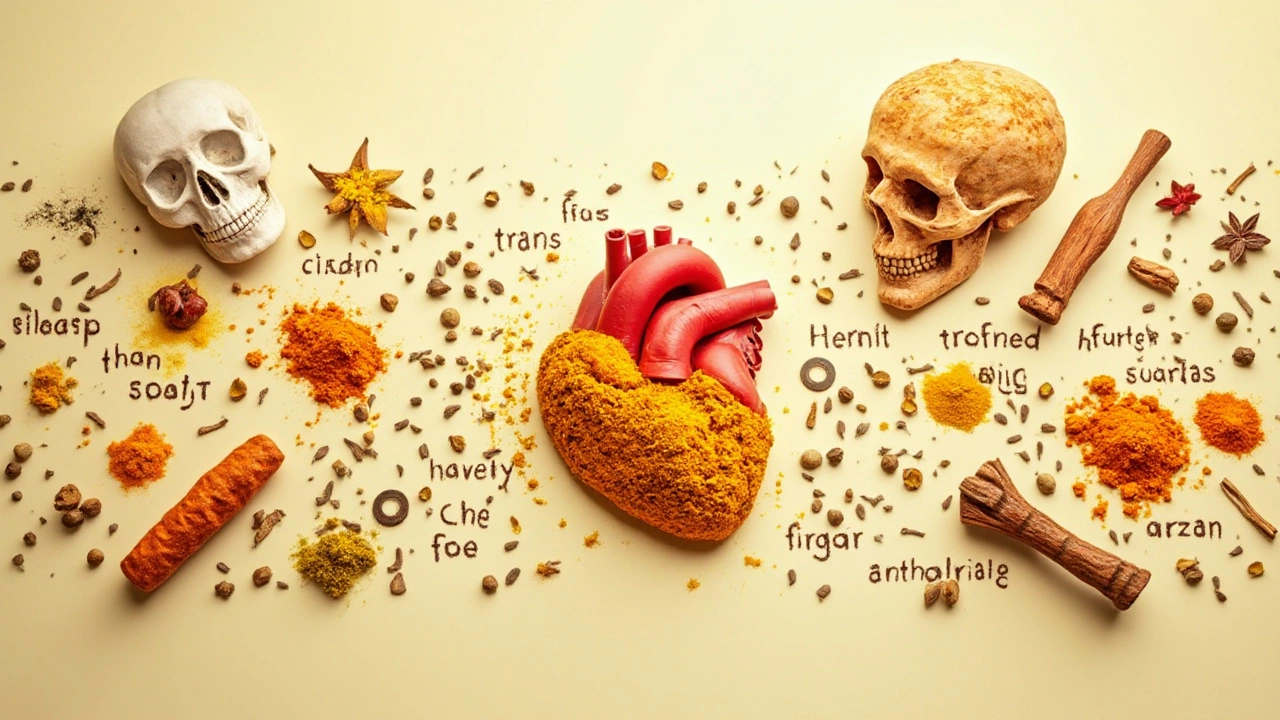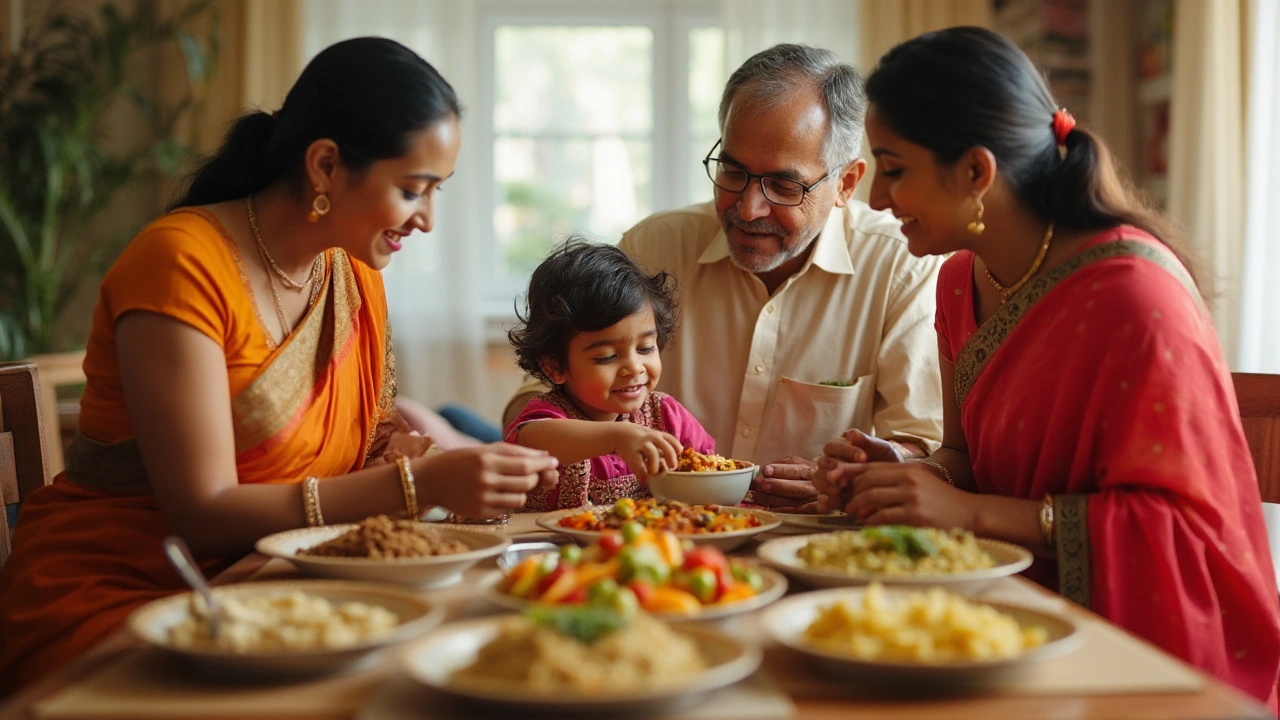In a world oozing with indulgent treats and sugar-coated temptations, the quest to identify the unhealthiest food takes us on a bumpy ride. Everywhere you turn, fast foods, processed snacks, and artificially flavored products beckon. But which of them wears the crown of unhealthiness? This curiosity not only ignites an interesting culinary debate but also encourages us to look deeper into our everyday choices.
The realm of unhealthy foods is vast, sometimes justified by their convenient appeal yet shadowed by the looming threat to our health. From trans fats to unwarranted sugar levels, many of these snacks pose silent threats that many of us ignore. Delving into the rich tapestry of Indian cuisine reveals an array of flavors that can transform your snack habits. With so many nutritious solutions waiting to be discovered, let’s journey together to find the balance between taste and health.
- The Allure of Temptation: Unhealthy Foods Explored
- Understanding the Risks: What's Lurking in Your Snack?
- The Indian Twist: Rediscovering Nutritious Flavors
- Smart Swap: Transforming Unhealthy into Healthy
The Allure of Temptation: Unhealthy Foods Explored
The world of unhealthy foods is not only vast but deeply alluring. These foods often tantalize our taste buds with their precisely-engineered flavors and textures, making them hard to resist. Fast foods, adorned with their striking colors and catchy promotions, capture our attention at every corner. The dilemma starts in how these foods are presented and how they speak to our innate cravings. The combination of high sugar, salt, and fat creates a symphony that sings to our pleasure centers, often overshadowing the quiet voice of caution. Our brains are engineered to seek out energy-dense foods as a survival mechanism, but in this modern age, this instinct can become a hindrance to health.
Take for instance, the infamous fast-food burger. It's quick, convenient, and promises a burst of flavors. However, one needs to be wary of these quick fixes, as they are often loaded with trans fats and hidden sugars. These ingredients are not only addictive but harmful to cardiovascular health. According to a study by the World Health Organization, consuming trans fats increases the risk of heart disease by a striking 21% and deaths by 28%.
"The more junk foods you eat, the less likely you are to obtain critical nutrients," remarks Dr. George Bray, an expert in obesity research.This revelation is even more alarming when we consider the prevalence of such food choices in daily life.
Another classic example is the innocent-looking potato chip. Slightly salted and crisped to perfection, these chips often accompany many, whether watching a movie or as a quick snack. But beneath that crisp lies a different story. High in calories and laden with salt, potato chips can spiral dietary habits into chaos. The sodium content alone can elevate blood pressure levels, posing long-term risks. It's not just a potato chip; it's a concoction that has gone through processes to enhance its appeal and shelf life, often at the cost of nutrients. A single serving can cross daily salt intake recommendations, without even quenching the appetite.
Why is it so hard to put these treats down once you've started? Much of it has to do with the bliss point, a term created to describe the perfect amount of salt, sugar, and fat in foods, which creates maximum enjoyment. These scientific concoctions tweak our cravings, compelling us to consume more. It's a calculated seduction, designed with precision and sometimes a bit of psychological manipulation to fuel the desires for more. This is where food industries excel, creating products that speak directly to our brain's pleasure circuitry.

Understanding the Risks: What's Lurking in Your Snack?
When we think of snacks, it's usually with fond memories of quick bites between meals or indulgent treats to curb cravings. But lurking within these enticing packages could be a trio of dietary dangers: trans fats, refined sugars, and excessive sodium. Understanding what these ingredients do to the human body is crucial for making informed choices. Trans fats, prevalent in many processed foods, have been linked to increased levels of LDL, the 'bad' cholesterol, leading to heart diseases. Despite the health hazards, trans fats have been favored for their ability to enhance flavor and prolong shelf life. Knowing that stirs a necessary caution when reaching for a pack of your favorite chips or cookies.
Refined sugars are another peril waiting in many snacks and beverages. While our taste buds revel in sweetness, our bodies often bear the brunt. Excessive sugar intake has been associated with a higher risk of obesity, type 2 diabetes, and cardiovascular issues. An average candy bar might significantly contribute to your daily sugar intake without you realizing it. Then there's sodium—a leading contributor to hypertension and kidney disease when consumed in large quantities. Its sneaky presence in savory snacks like crackers or popcorn often goes unnoticed. A strong emphasis on understanding nutritional labels can help increase awareness about these hidden risks.
Those seeking healthier snack options might not realize the pitfalls awaiting within their pantry. With consumer habits shifting towards convenience over nutrition, it is not surprising that many continue to fall into these traps. With over half of adults consuming more than the recommended amount of sodium daily, reflecting upon our dietary choices cannot be understated. The American Heart Association recommends no more than 2,300 milligrams a day, ideally moving toward 1,500 milligrams for most adults. Yet, for many, snack time could mean accidentally crossing those limits.
"Processed foods have sneaky ways of slipping junk into your meals," said Dr. Marion Nestle, professor of nutrition at New York University. "It's not just the fries; it's the sauces, the toppings, the entire toolkit of extras disguised as 'add-ons.'"
A vigilant approach—through meal preparation and selecting wholesome ingredients—can significantly reduce exposure to unhealthy components. With the rise of information and awareness, more people now opt for nourishing alternatives. While this transition may initially seem overwhelming, it generates invaluable benefits that extend beyond diet; it enhances overall well-being. Taking small yet decisive steps today paves the way for a healthier tomorrow.

The Indian Twist: Rediscovering Nutritious Flavors
The rich tapestry of Indian cuisine offers a bounty of flavors that extend far beyond the tantalizingly aromatic curries and desserts we often associate with it. It’s a land where each region boasts unique ingredients and cooking techniques that have been passed down through generations. This diverse culinary landscape is not only vibrant but also remarkably health-conscious, if you know where to look. Traditional snacks like roasted chickpeas, puffed rice blends, and spiced lentil crisps are examples of how Indian flavors can be celebrated without compromising on nutrition. Many of these snacks focus on using whole, natural ingredients that provide energy and satisfaction while being low in calories and fats.
Take the humble channa, or chickpea, for example. In Indian households, these legumes are often roasted to create a crunchy snack that’s not only high in protein but also rich in fiber. These nutritional giants have revitalized interest in legumes globally, thanks to their ability to keep hunger at bay and provide essential nutrients. In contrast, consider the nutritional abyss of processed foods, where artificial additives outweigh any semblance of natural benefits. Whether it’s spiced simply with chili and salt or mixed with other wholesome seeds and nuts, roasted channa embodies the balance that many aim for in their dietary habits.
"Incorporating whole foods and traditional recipes into your diet can significantly reduce your risk of chronic diseases," nutritionist Niti Desai notes, emphasizing how classic snacks can be both flavorful and beneficial.Beyond the chickpea, puffed rice or murmura is another delicious option that has been a staple in many Indian snacks. This ingredient is often used in bhel puri, a salad-like dish bursting with tanginess, thanks to the addition of tamarind sauce, tomatoes, onions, and spicy green chili. As it courses through your taste buds, each mouthful offers a mix of textures and flavors that keep you coming back for more. Murmura is low in calories and adds volume to snacks without additional heft, making it indispensable in kitchens across India.
Moreover, lentils play an essential role in creating nutritious snacks that provide sustenance without remorse. Look to papadums,-thin lentil crackers, which can be either roasted or lightly fried. When garnished with native spices, they deliver more than just a satisfying crunch—they offer protein, essential minerals, and, most importantly, the signature taste that makes Indian snacks universally beloved. In opting for these wholesome delights over their less healthy counterparts, we make a conscious decision towards better eating habits. These snacks are not just a celebration of traditional flavor profiles, but also of nutritional enlightenment.

Smart Swap: Transforming Unhealthy into Healthy
Embarking on a quest to switch the unhealthy foods for nutritious options isn't about deprivation; it’s more of a delightful discovery. Imagine a world where every morsel you savor not only tantalizes your taste buds but also nourishes your body. Such transformations might seem daunting at first glance, but with small yet consistent choices, the journey becomes a rewarding adventure. Take the quintessential habit of snacking. For decades, our senses have been overwhelmed by the bright colors and artificial flavors of packaged snacks. Intriguingly, the trick lies in redefining the very structure of snacking.
Snack smartly by opting for naturally derived ingredients which still pack a punch in flavor. Instead of reaching for a bag of chips loaded with trans fats, think crunchy roasted chickpeas or spiced puffed rice, deeply rooted in Indian snack culture. These alternatives not only offer that desirable crispiness but also provide essential nutrients. Let's not forget that worldly wisdom suggests, 'You are what you eat.' This simple adage encourages a deep dive into embracing snacks rich in vitamins and antioxidants.
Spices remain the heart of redefining these choices. Indian cuisine generously lends itself to crafting a snack that is alive with flavors without adding needless calories. Experiment with turmeric’s earthy notes or the warming kick of cumin. A sprinkle here, a dash there—before you know it, bland becomes brilliant. Empower yourself by embracing these heritage-rich transformations. It magnifies the beauty of tradition meeting modern demands for health.
The journey of a thousand miles begins with one step.
- Lao Tzu
Beyond ingredients, consider cooking methods. Many packaged snacks mask their unhealthy nature through deep frying which adds unnecessary calories. Why not swap fried methods for roasting or air frying which retain the taste while eliminating excess oil? Change how you perceive your snack-time rituals. This evolution not only rejuvenates your palate but heightens the appreciation for nutrition. It's about finding joy in the food choices that protect our bodies, ultimately enhancing the quality of life. The radical shift from unhealthy to wholesome is a transformation worth committing to—a canvas of flavors waiting to be painted with nourishing intent.
